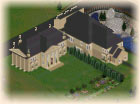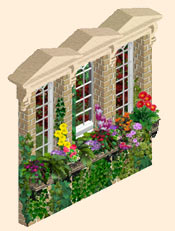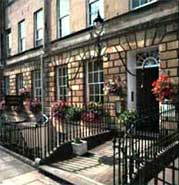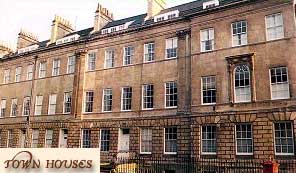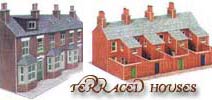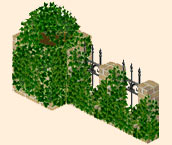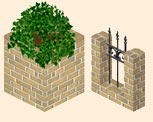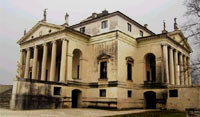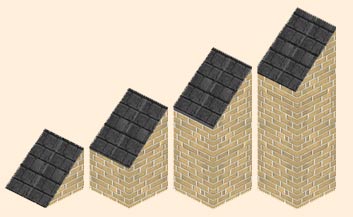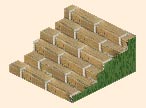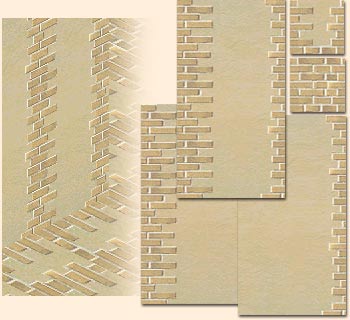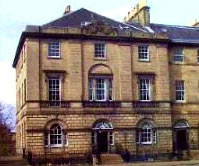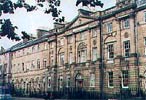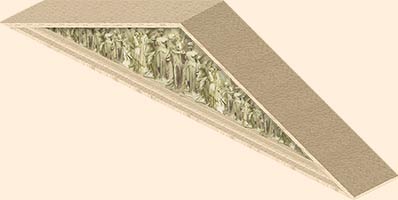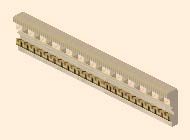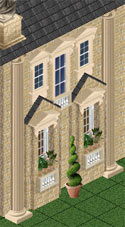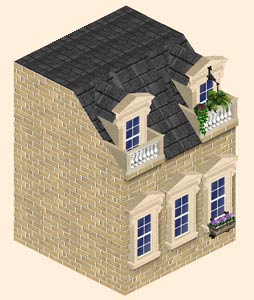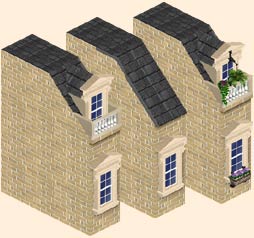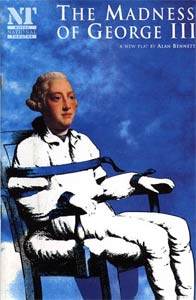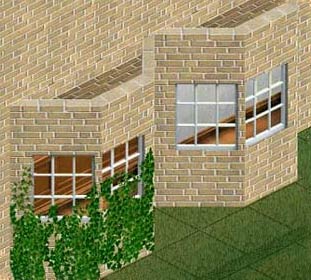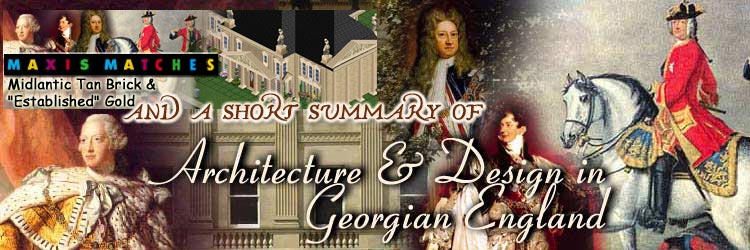 |
||
|
||
| It doesn't take long in playing The Sims before one realises that there are very few default build mode items which match the excellent Maxis default exterior brick walls - and, puzzling in itself, very few default floors. In the series "Maxis Matches", you will find several building items retextured from some of the Maxis wall textures to bring a little harmony into your homes. Not all of these items will be found in build mode; some will be found in buy mode in various places, but all pieces are architectural in style. | ||
|
||
| Download everything in one big zip - ( REPAIRS Sept. 2015 - PLEASE RE-DOWNLOAD) - find this at the bottom of the page! Zips with the normal winzip symbol are just the same objects in smaller packs below for those with slower connections. If you download the big zip, you will NOT need any of the smaller zips from below unless they are marked with the NEW! symbol. Note that showcased items are NOT included :o) | ||
 |
||
|
This set is actually based on two walls from Maxis - the Midlantic Tan Brick from the original game and "Established" Gold from one of the later expansion packs. Until recently, I always thought the first one said Midatlantic, so it goes to show that no matter how many times one can read something it may not always be read correctly. But no matter how it's spelt, this is another brick texture which works as well inside the home as out. I use it together with the "Established" Gold as they go together very well. |
||
 |
||
| Where I live, there are a few streets of Georgian houses in these colours, and most are (or have been) covered in ivy. I have always been struck by the contrasting loveliness of the dark green creeper on top of the sandstone and sand coloured brick, and so took this as the basis of my theme. Having seen the new "Home" series over at Marina's Sims, I could not resist using her windows, and have also took this opportunity to present my tribute to Stacy Gibbs' Vicarious Living group, sadly gone for the moment, though all her objects can be found at The Sims Resource or at the POBS forum at N99. | ||
|
|
||
|
||
|
|
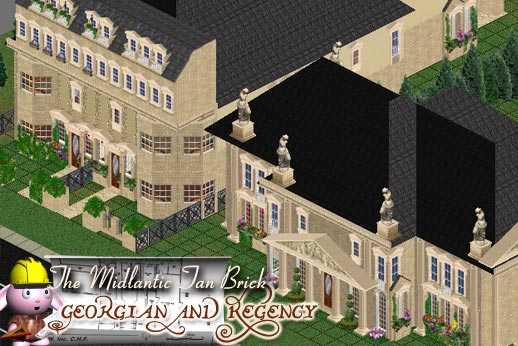 |
REPAIRS Sept. 2015 - PLEASE RE-DOWNLOAD PLEASE NOTE: This zip does not contain any objects, walls or floors. You will need to download, unzip and install all the object, wall & floor zips from below before playing this house, otherwise you will get the dreaded "missing objects" box and the house will be incomplete. You have three houses on one lot! A pair of Georgian Town Houses, and a Regency mansion. The Town Houses are divided into rooms as accurately as possible, while the mansion is completely empty for you to transform however you wish; maybe a lavish party area or a huge, decadent, indoor pool... |
|
|
||||||||||||||||||||
|
||||||||||||||||||||
|
|
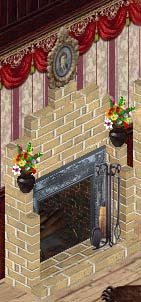 |
These are all fixed! They don't wobble any more when lit! Redownload these and they will overwrite the old ones in your game. I made the first one ages ago but it was too blurry for my taste and until I recently learned that fuzziness was all in the A sprites, had no idea how to fix it. Then after that all I had to do was to learn how to fix the Z buffer.... which I am the first to admit is not quite right but I think it's reasonably ok now. Just don't try to put your rug under them - but then one wouldn't put a rug underneath a built-in fireplace anyway, so that justifies that. Ha. |
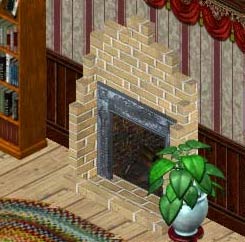 |
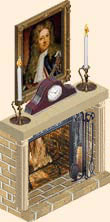 |
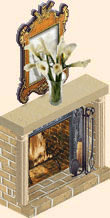 |
 |
They
won't cause any dramas in your home because they are cloned from the
animated wall sconce. This also means you can't put a picture above
them, so I have done that for you. The mirrors & some other items
by Stacy Gibbs are attached to the fireplace and are for decoration
only.
Finally, I would not recommend putting them in a corner - because they are one tiled objects but a little wider than one tile at each end, they will bleed through corner walls. |
|
So, with all those disclaimers established, what period are we talking about when we say "Georgian design"? The styles of architecture most commonly associated with Georgian England are at their most strongly identifiable in the period 1715-1800 when, more than any other period of English historic architecture, Georgian style was almost exclusively influenced by the classical architecture of Greece and Rome. The excesses of the Baroque had created a distaste for over-decoration and the Renaissance villas of Palladio were especially admired as reflecting the pure lines of classical architecture. There was a political element to this change of taste as Baroque was associated with the Counter-Reformation while the Hanoverians were a firmly Protestant dynasty. Also during this period, an entire generation of English aristocratic youth travelled throughout Europe on the "Grand Tour", which was designed to broaden the mind and put a "real-world" polish on their academic education. These Grand Tours exposed the most influential class in Britain to the classical traditions of style and architecture, and these young men (and sometimes women accompanied by a chaperone) often came home fired by an enthusiasm for classical architecture and design. All of these situations, combined with a strong sense of nationalism during a very turbulent time in political history led to there being many stylistic differences as well as similarities within the Georgian Period. These can be narrowed down somewhat into three distinct movements called Palladian, Adamesque & Greek Revival, which I go on to detail later. |
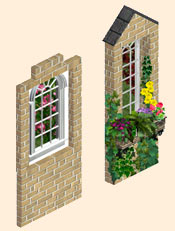 |
Give a new lease of life to ALL your windows with this set of 18 architectural wall details. Because these wall details are separate objects and not a window in themselves, you also have the advantage of being able to use them with any of your collection of recoloured windows. The square ones also work well with any square or rectangular window. Based on a droppable rug piece, your sims can walk over them, you can put other items on the same tile and HD users can place wall mountable items on the windows as well. I don't recommend placing large items on the same tile, but things like plants & small bushes are ideal. |
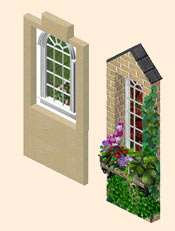 |
|||
|
These pieces can be used on their own, tiled, or around other windows of your choice with the Midlantic Brick or Established Gold walls or even perhaps another wall to give a complete contrast. The pieces are all backless and droppable with thanks to Koromo at Persimmon Grove, without whom I simply would not have anything unique to add to this site. |
|
To place them on a second floor, you will need to place them on the transparent floor tile included in the zip for the sectional ivy on the Landscaping page for which I am very grateful to Caro of Caro's Sim Kagen for permission to include it. The pieces are slightly larger than one tile so should not be placed in a corner. The thickness of the wall gives an authentic depth to the windowsill, and none of the plants will ever need watering. |
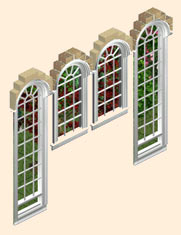 |
On the left are two small arched stepped pediments for the Monticello, Federal and other rounded windows & doors, and the sideless one far right goes well with the Hot Date shuttered window. All the pieces are standalone, and the larger ones can even be used to create a garden walkway. To do this effectively, place two back to back facing opposite ways to get rid of the "backless" effect. Priced at the astonishingly low bargain basement price of just one simolean, you will find all these pieces in Buy Mode / Miscellaneous / General. |
 |
 |
 |
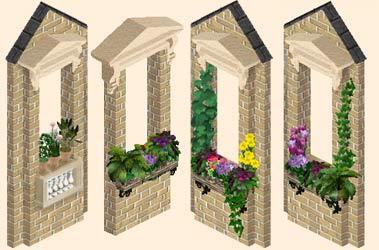 |
Some pieces are slightly wider than others to give more architectural depth, while some feature double pediments to match both the windows and the roof of the house itself. The piece on the far left features some of Stacy Gibbs' potted herbs and some of the pieces also feature some of the lovely ivy texture with the extremely kind permission of Hanna at SimSisters (closed) - a site which although no longer updating has some extremely beautiful and well crafted items for your game. I can guarantee that a visit will have you downloading everything in sight! |
|
|
||||||||||||||||||
|
||||||||||||||||||
|
|
 |
Build
Mode Kit 1
|
|
1714 - 1760 Palladian
|
Palladianism is a philosophy of design based on the writings and work of Andrea di Pietro della Gondola (1508 - 1580) an Italian architect who tried to recreate the style and proportions of the buildings of ancient Rome. Andrea apprenticed to a stonecutter when he was 13 years old and learned the principles of classical architecture when he worked on new additions for a villa owned by Gian Giorgio Trissino, a leading scholar of the time. Trissino nicknamed his mason "Palladio" after the Greek goddess of wisdom, and the name stuck. La Villa Rotonda in Vicenza, Italy (pictured) is considered the most perfect form of his work. The central dome, one of Palladio's most famous and imitated motifs, was itself inspired by the Pantheon in Rome. What characterizes Palladian architecture? In a nutshell, grace, understated decorative elements, and use of classical "orders" such as symmetry and regularity of detail often using certain mathematical formulae. |
|
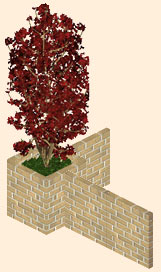 |
Another connecting fence but this time a complete contrast - plain brick with a tree in blossom at the corners. Droppable Gable Set - doesn't bleed anymore! You can place the gables in any way you like to give the effect of a multi-storey building. Idea credit to Ophelia - although I have modified mine somewhat so that they have all four views and can be placed against walls at any rotation. |
|
|||||||||
|
|
|
|
1760 - 1790 Adamesque (or Neoclassical)
|
Adamesque style was named after the Scottish architect Robert Adam (1728-1792). Son of an architect, Robert and his three brothers (John, James and William) all followed in their father's footsteps. Robert did the "Grand Tour" following which he and James set up a practice in London in 1758, developing there an integrated style, an elegant sense of proportion and unified facades. In 1762 he was appointed as a royal architect and became the most fashionable architect in England. He had a great impact on interior design with elaborate plaster work and neo-classical figures. He developed the concept of an integrated interior with walls, ceiling, carpet and furniture all designed as a single scheme. He is particularly noted today for the quality and style of his architectural fireplaces, often built to match interiors. Refusing to be confined in the Palladian strait-jacket, he borrowed Byzantine, Italian Baroque and even Etruscan motifs, as well as those of Ancient Greece and Rome. His brightly-coloured interiors were covered in refined ornamentation. He largely influenced the design of the New Town, Edinburgh, particularly Charlotte Square (pictured). |
|
 |
The only shopping list item for this house is to be found at Alle Meine Sims where you need to download the mini hedge set (left) made by Sweetie (if you don't already have it, of course!). As this excellent site is in German, the best way of finding the set is to go to the Sitemap and then scroll down until you see "Mini-Hecken". But don't be afraid to wander round the other pages from the sitemap - there is much more wonderful stuff to be had from there! |
|
I am extremely privileged to have had permission to rework Sweetie's hedges, and have mixed and matched them together with her originals. Mine are cloned from the one tile rug, so you can put two on the same square or other items on top. I have done the whole set to match the default hedges & topiaries, and some as herbs for a Knot Garden. Many "Knot" gardens from the 1500s onwards survive in the larger estates. Boxwood and herbs were planted as dwarf hedges which were kept clipped in the form of interlacing ribbons, often to ancient and meaningful designs. I have not attempted to faithfully recreate an authentic one for you, but have still had a blast laying down the patterns. Also cloned from the one tile rug are various shades of soil-less tulip and a corner topiary (shown below). Other plants are from the game, though you will also need my hillside trees from the Landscaping page. |
 |

 |
|
Ever wonder where all that overgrown ivy comes from? The well-overgrown decorative ivy planter shown on the right may well be the source. Using ivy images with permission from SimSisters, Juniper Sun and Mermaid Cove, and of course, myself, this planter can help you to mix and match all your sectional ivy pieces. |
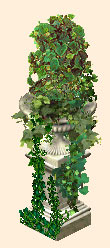 |
|
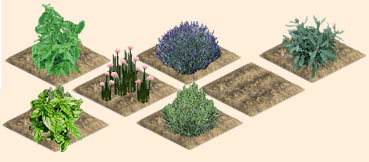 |
I am very proud to be able to offer "as is" Stacy Gibbs' Herb set from Vicarious Living. Your cats will especially enjoy playing with the catnip plant (top left). |
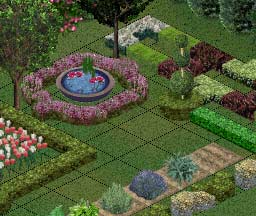 |
|
1790 - 1830 Greek Revival
|
The search for purity in architectural form finally led to the revival of the Greek Doric style, of which one of the main adherents was John Nash (1752-1835). Although he worked in many architectural styles, from Gothic to Italianate, Palladian, Greek, Oriental and picturesque, in 1811 the Prince Regent asked Nash for ideas on developing the farmland called Marylebone Park and the surrounding areas in a style now generally known as Regency, characterised by fluted pilasters replacing full-bodied columns and a general refinement of Classical details to mere decorative motifs. Nash's ambitious plans included a "garden city", with villas, terraced houses, crescents, a canal, and lakes.The prime focus of the developement was a proposed avenue from Prince Regent's Park to "Prinnie's" home at Carlton House in the Mall. The area covered by Nash's scheme covered the present Trafalgar Square, St. James' Park, Regent Street and Regents' Park. Several elements of Nash's sweeping scheme had to be abandoned, including a summer palace in Regents' Park, and the present day Regent Street has been much altered. However, Park Crescent (pictured) remains much the same today as when first built. |
|
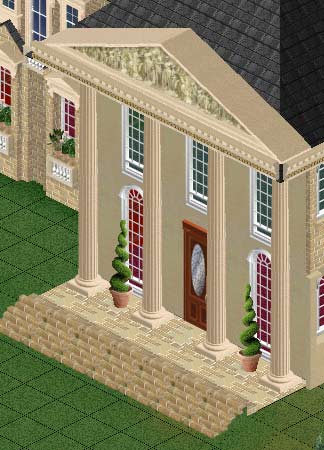 |
|
|
|
|
|
|
||||
|
||||
|
|
|
|
 |
"Bun, it's all very well having a pretendy third - and now fourth - floor for my game" you might say; "but how would my simmies get up to that pretendy floor?" The answer is : with a pretendy staircase! Hacked by P8ntmstrG some time ago for me, this is a staircase to be found in buy mode which sits on a second floor. It is purely decorative, your sims cannot go up or down it, but as a prop it is unsurpassed to give the appearance of more than two storeys in a house. What's more, it is free to clone for free or unrestricted sites, so object makers can have a blast converting it to match their existing sets. Please! |
|
|
|||||
|
|||||
|
|
|
|
||||||
|
||||||
|
|
|
|
All the
115 items above can be downloaded in this one BIGZIP 
REPAIRS Sept. 2015 - PLEASE RE-DOWNLOAD
The BIGZIP is just a normal zip file with everything inside one large zip, I just call it that to distinguish it from the normal sized zips.This one zip contains everything pictured above that does not have the NEW! symbol next to it.
Unzip to a temporary storage folder, and you must move the files accordingly as below:
- House03.iff to C:\Program Files\Maxis\The Sims\UserData\Houses (for the original "The Sims") or C:\Program Files\Maxis\The Sims\UserDataXX\Houses - where XX is the number of the neighborhood. For example, if you want it in Neighborhood 3, it goes to: C:\Program Files\Maxis\The Sims\UserData3\Houses\House03.iff
- Files ending in .wll to C:\Program Files\Maxis\The Sims\GameData\Walls
- Files ending in .flr to C:\Program Files\Maxis\The Sims\GameData\Floors
- Files ending in .iff to C:\Program Files\Maxis\The Sims\GameData\UserObjects
- Files ending in .bmp to C:\Program Files\Maxis\The Sims\GameData\Roofs
All items are priced at §1, §10 or §100 for you to find easily enough in your game. All walls & floors are priced at §1.
If you would like to redesign or recolor objects from the Midlantic Tan Brick set, please provide credit on your site and in the object description with a link back to us. Most recolours here are from base items from sites participating in the Recolourers Resource Project, but where I have had specific permission for an item to be cloned for this set, you will need to ask the same permissions from the original designer - these are as follows:
- Knot garden set by Sweetie at Alle Meine Sims
All links to the original site where I have made the recolour from are given where possible. See notes on home page.

